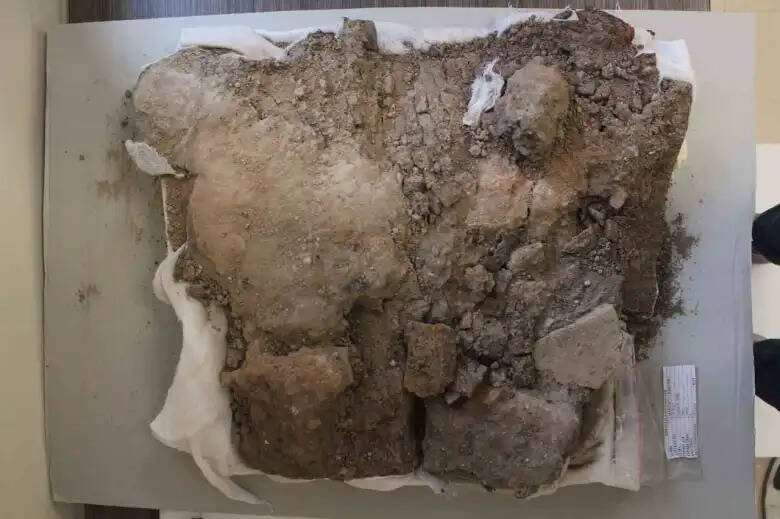Worn by a warrior in the 15th Legion during the decades just before Rome fell in 476 C.E., this armor was found near a castle along what was the Empire’s eastern border in present-day Türkiye.
Turkish Ministry of CultureThe full restoredLorica Squamataarmor once fag out by a soldier in ancient Rome .
In 2020 , archaeologists working in the ancient city of Satala in Türkiye excavate a well - preserve and one - of - a - sort instance of ancient Rome’sLorica Squamataarmor .
This armor , with its scaly and flexible design consisting of many small-scale dental plate , originated in the Late Roman Period . During the armor ’s blossom in the first and 2d centuries C.E. , it was assume by luxuriously - order warrior , include officers and standard bearers .

Turkish Ministry of CultureThe fully restoredLorica Squamataarmor once worn by a soldier in ancient Rome.
Now , four years after the initial excavation of the 1,500 - year - old armour found in Satala , workers at the Erzurum Regional Restoration and Conservation Laboratory have announced the full renovation of this stunning artifact .
Discovering TheLorica SquamataArmor In Türkiye
Wikimedia CommonsThe remains of the ancient city of Satala , where the romish armor was found .
In 2020 , archaeologists excavating the ancient city of Satala , in Gümüşhane , Türkiye excavate remnants of RomanLorica Squamataarmor . Thisdiscoverywas the first of its sort in history .
In 2021 , the archaeologic squad transferred the clay - coat armour to the Erzurum Regional Restoration and Conservation Laboratory . There , the research lab conducted X - rays and tomography to give away the form of the armor below the grunge .

Wikimedia CommonsThe remains of the ancient city of Satala, where the Roman armor was found.
Turkish Ministry of CultureThe armor as it appear when archaeologists first unearthed it .
Just recently , the Ministry of Culture and Tourism of Türkiyeconfirmedthat the armour was 1,500 years old and belonged to theLorica Squamatavariety from the Late Roman Period .
This type of armor was referred to as “ shell armour ” due to its unambiguously scaly look . Roman soldier of high rank , such as officers and martyrdom , likely put on armour of this case .

Turkish Ministry of CultureThe armor as it appeared when archaeologists first unearthed it.
Lorica Squamatafeatured bronze or iron “ scurf ” sewn onto leather or cloth . Its intent provided ease of movement for soldiers and the power to easy supersede damaged scale .
So far , theLorica Squamatafound in Satala is the only survive example of this armor , and researchers have just announced the historic news of its full renovation .
The Painstaking Process Of Restoring This Ancient Roman Armor
@muzeler_dairesi / XA worker from the Erzurum Regional Restoration and Conservation Laboratory restores the Roman armor .
At the Erzurum Regional Restoration and Conservation Laboratory , X - rays shew that the armour was relatively intact . This storm the research worker , as most armour of a similar age has not survived to the present Clarence Shepard Day Jr. .
Typically , armour of this kind was not custom - made . It was mean to be mended as needed and reused by soldiers . When armor became irreparably damaged , it was typically melt down .

@muzeler_dairesi/XA worker from the Erzurum Regional Restoration and Conservation Laboratory restores the Roman armor.
Therefore , researchers see that they had an vastly important diachronic artifact in their possession that needed to be reinstate . After conclude X - ray , investigator used CT scans to reveal the armor ’s precise measurements and metallurgic properties .
For the next three yr , the laboratory cautiously catalogue each plate of the armour . After touch on and cleaning them , investigator reattached or strengthened their detention on the leather soundbox , which ride on a manikin .
“ Through rigorous attempt over three years at the Erzurum Restoration and Conservation Laboratory , each plateful of the armour was carefully catalogue , economise and restored to its original form . The armor was reassembled on a mannequin to reflect its original coming into court , standing once more in its full glory , ” Turkish Culture and Tourism Minister Mehmet Nuri Ersoy pronounce in asocial medium postannouncing the discovery .
“ I would like to thank our … stave who bring to the creation of this magnificent work , ” said Ersoy , “ which open up a unique window into the warrior past times of the Roman Empire . ”
After reading about the Roman armor , dive into44 of history ’s most magnificent piece of armour . Then , understand aboutdecimation , the savage Roman punishment for fearful or insubordinate soldiers .